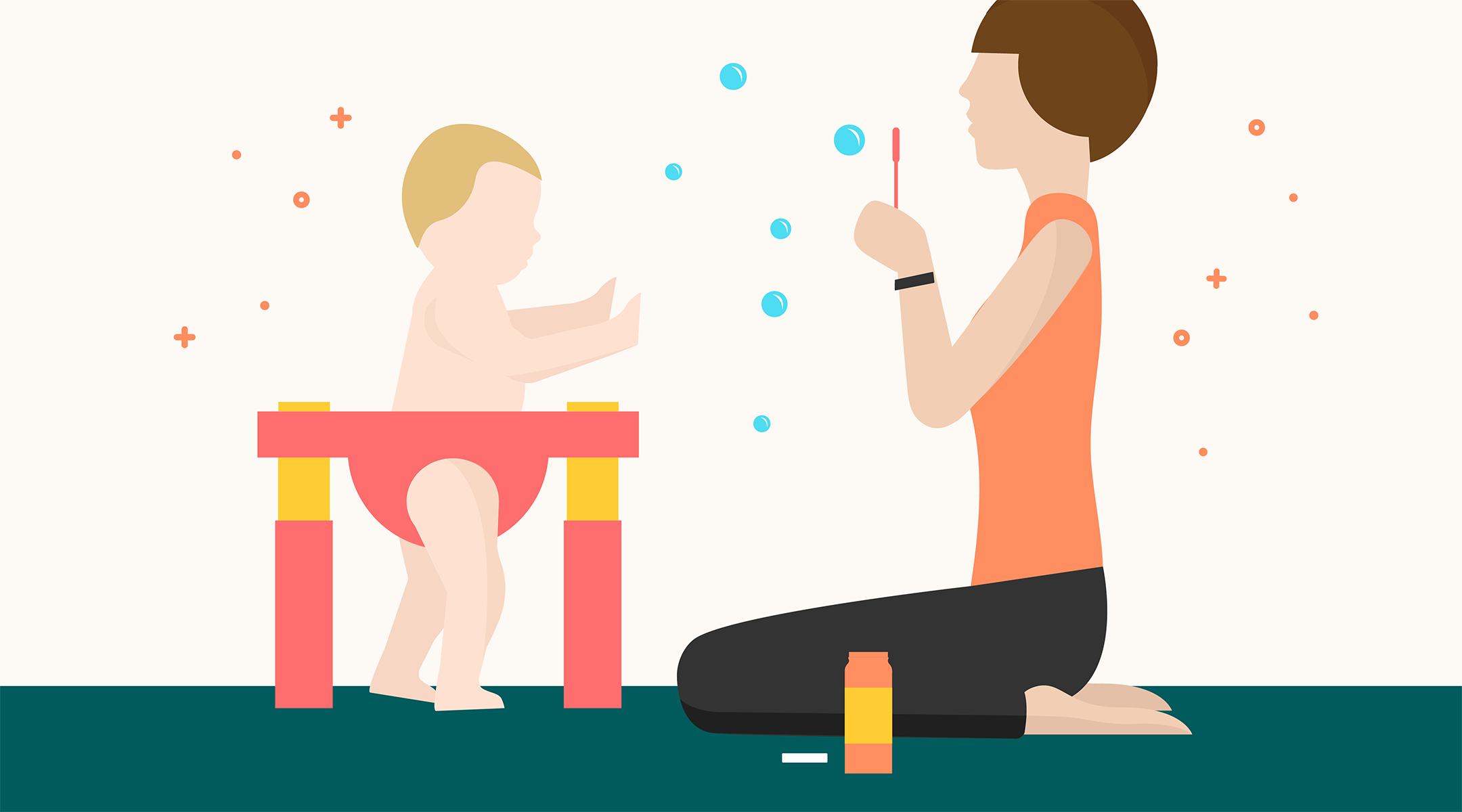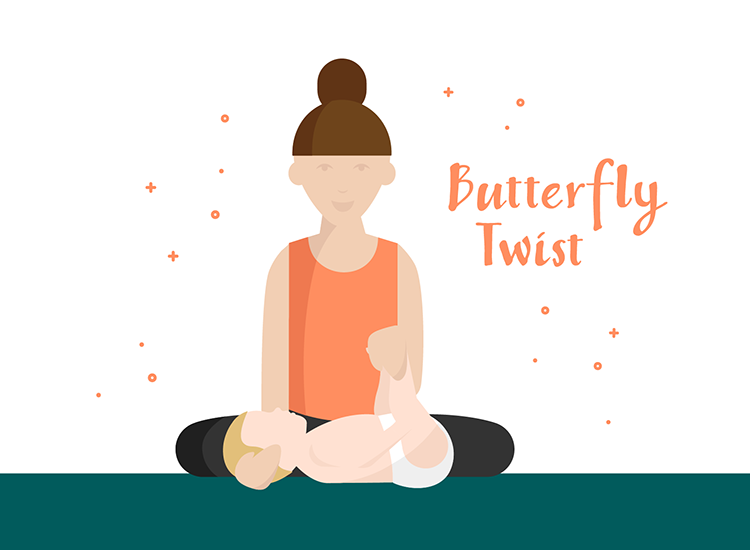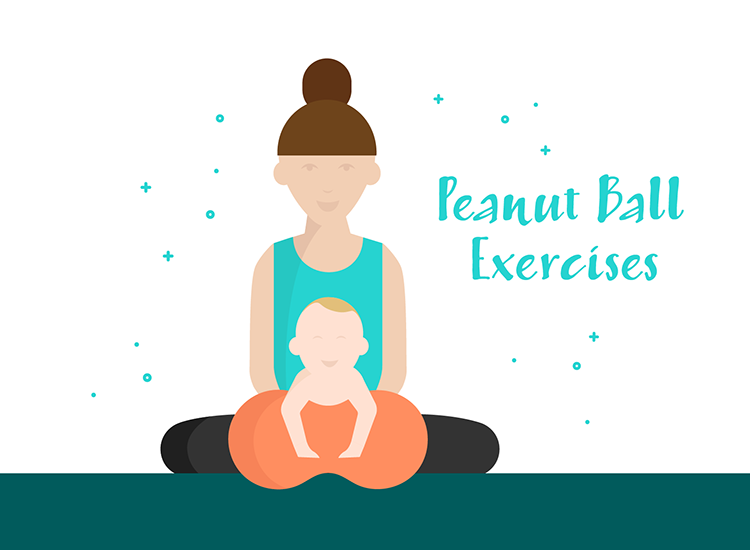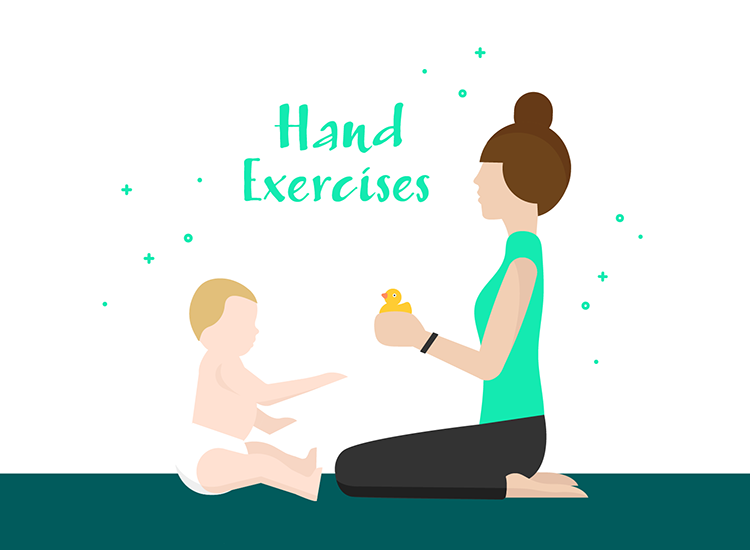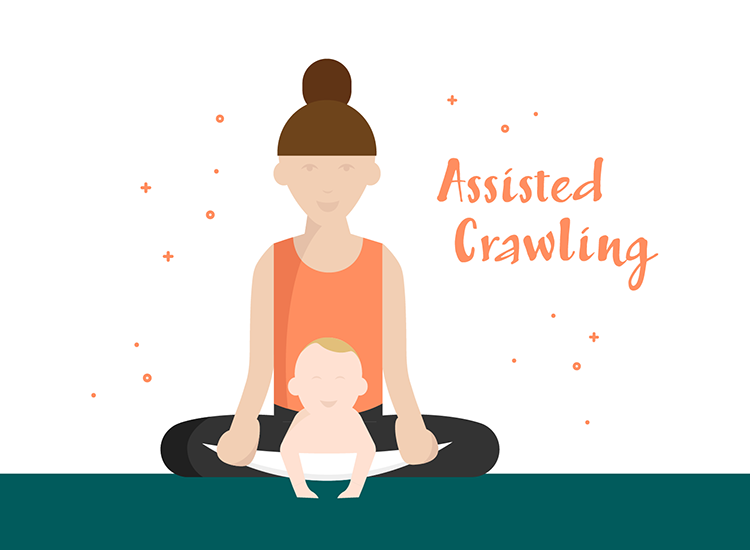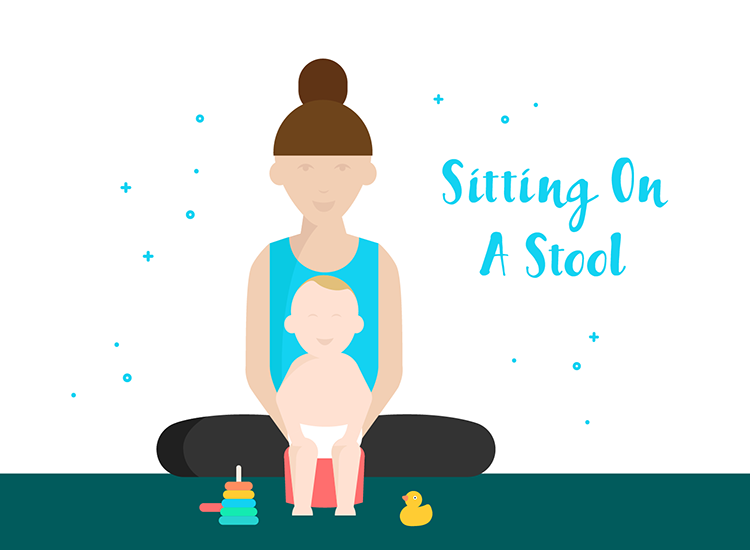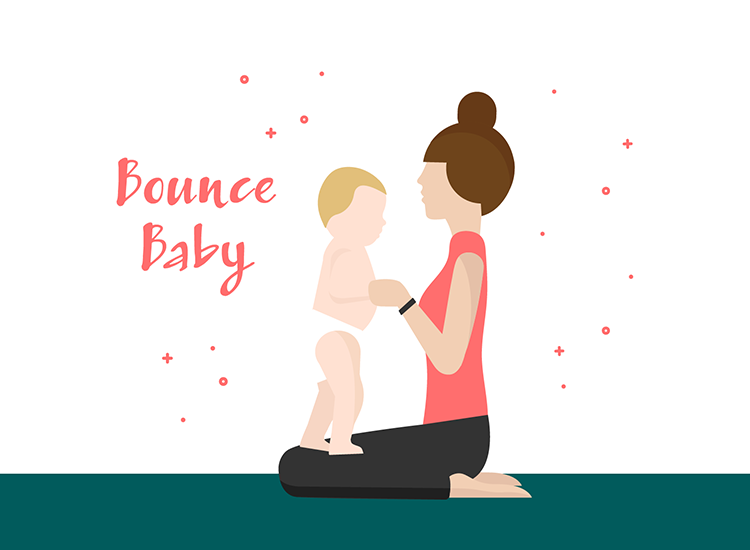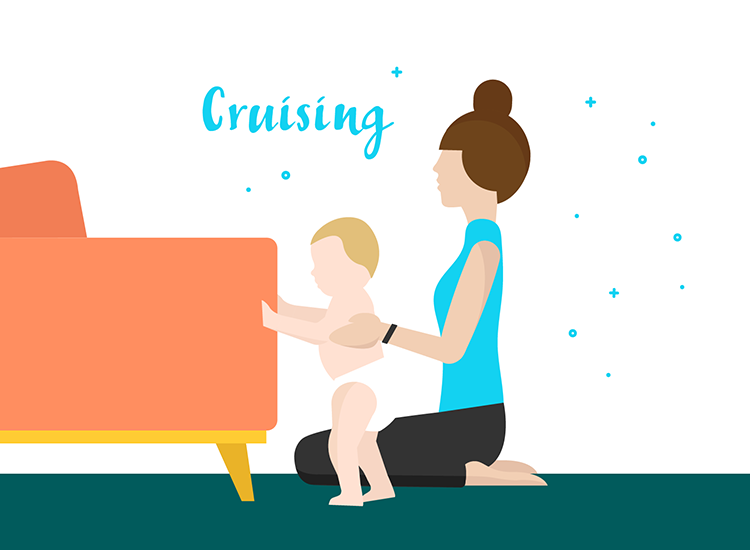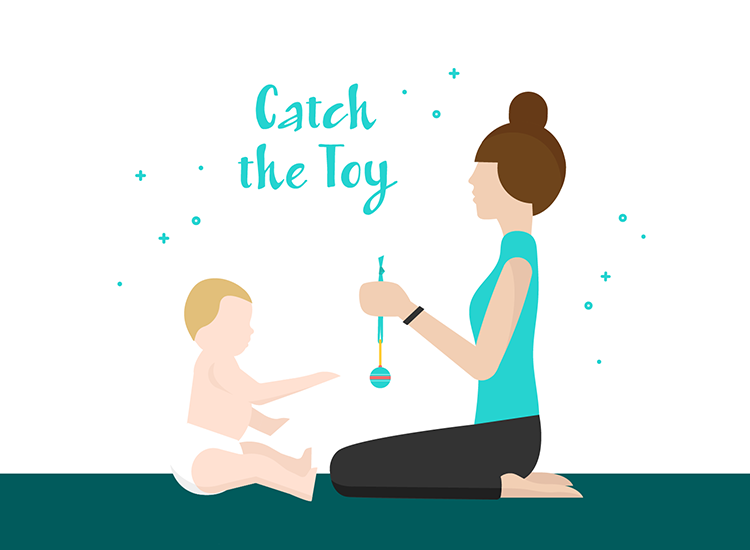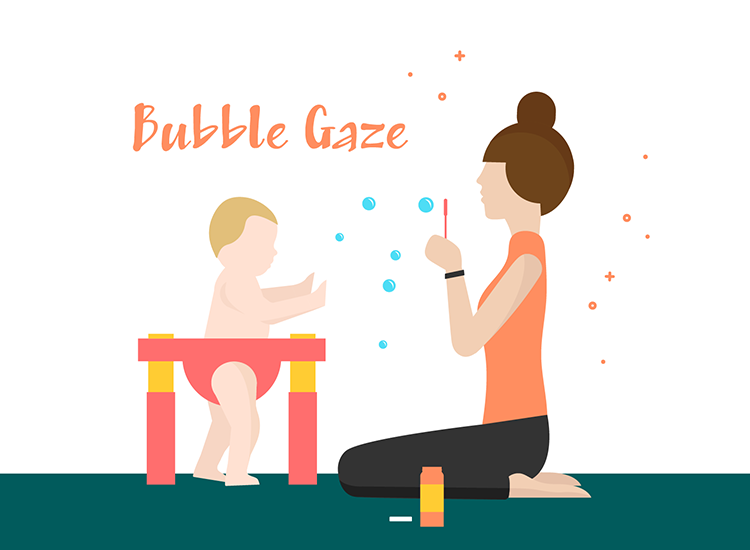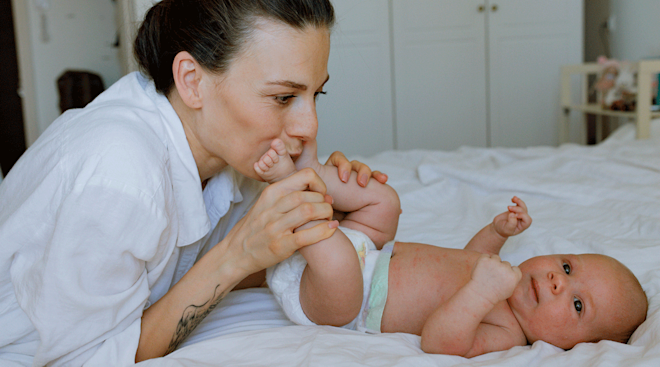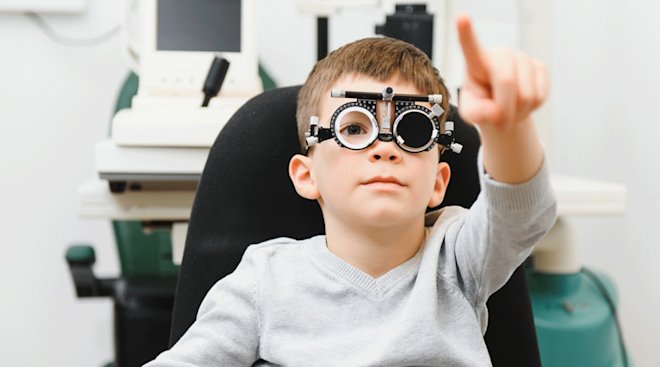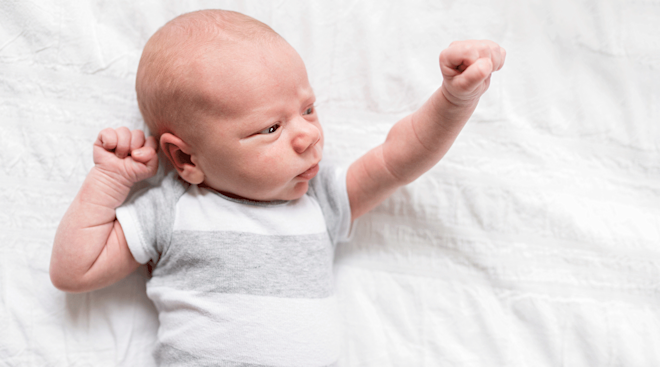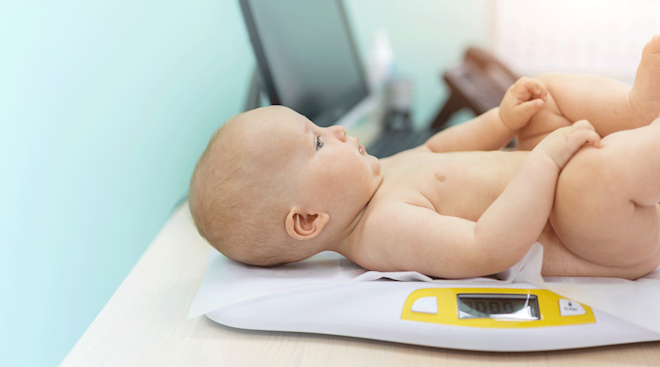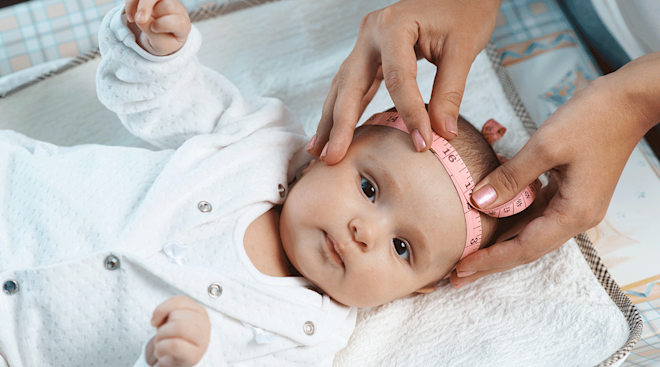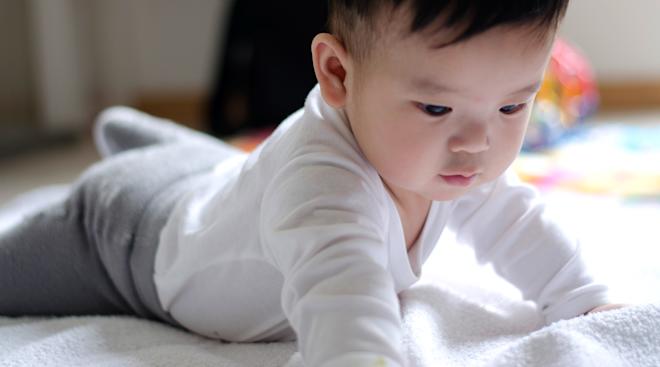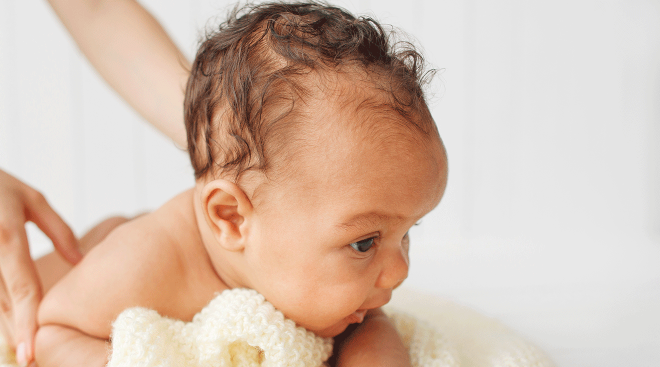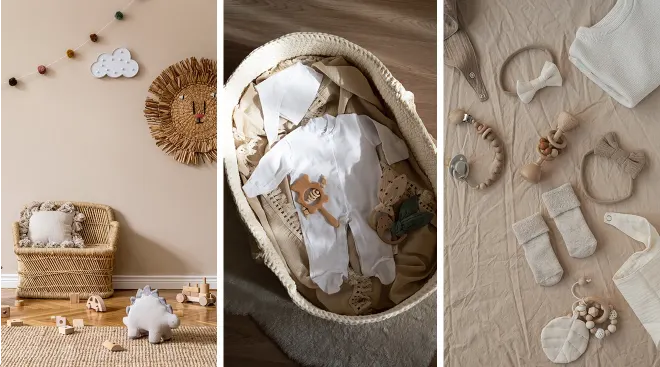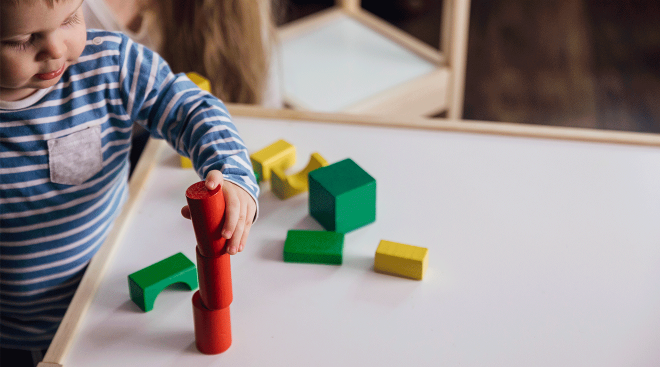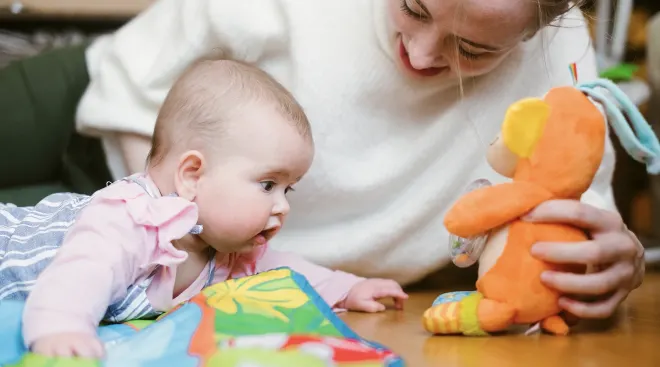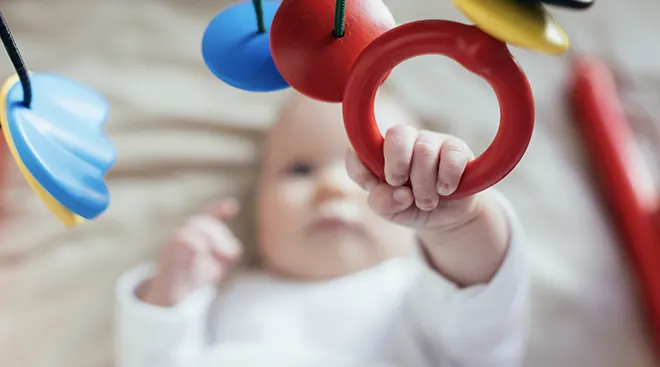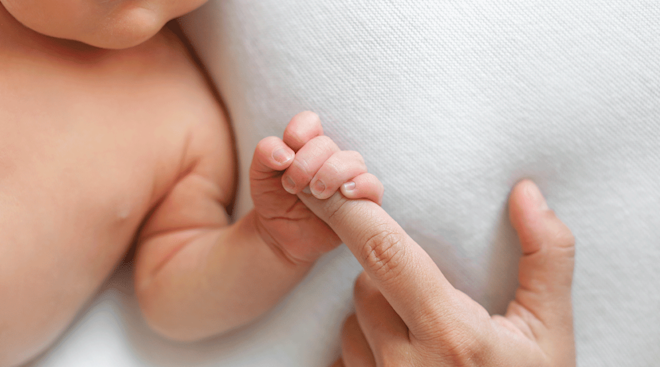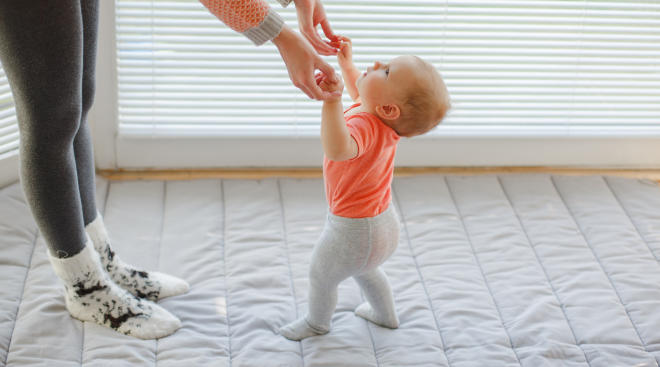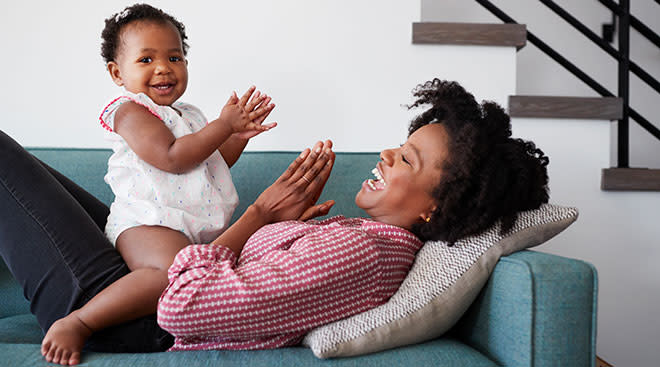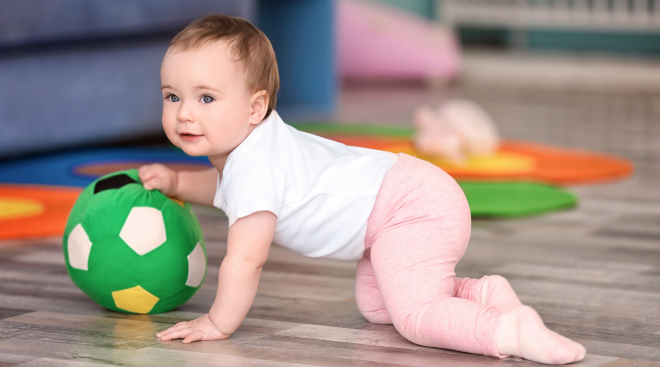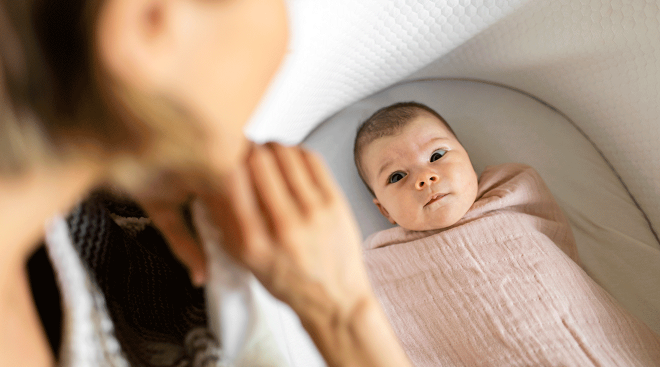14 Baby Exercises to Get Your Baby Moving
When you think about exercise, you wouldn’t tell babies to drop and give you 20. But the Society of Health and Physical Educators recommends that all children up to age 5 do some kind of physical activity every day. And yes, that means babies too. Baby exercises are an important part of infant development. Infant exercise can help strengthen baby’s neck, help develop their hand-eye coordination and help baby learn to walk. So where do you start? From strengthening to baby yoga exercises, it’s time to get baby pumped to move with these baby exercises.
If you’ve ever done yoga, you know how good a little Namaste can feel. And according to the experts, baby can benefit big time from some stretching too! “Poses can help relieve baby constipation, colic and gas,” says Claire Koepke, a registered yoga teacher in prenatal, postnatal and therapeutic yoga. “These simple yet efficient movements can also improve baby’s sleep, in turn improving your sleep.” Everyone’s on board with that! Here are three simple baby exercises to teach your little yogi that can have lasting benefits well into toddlerhood.
Happy Baby
This pose is something baby may already do and not realize it’s actually a baby stretch exercise. Have baby lie on their back and put their legs in the air. Next, have baby hold their feet and sway back and forth. If your child doesn’t grab their feet on their own, don’t worry. Koepke says to “gently hold onto their feet, with the knees bent and opened wide, to facilitate the stretch for them.” This is an excellent baby exercise to open hip muscles and stimulate digestion. Plus, it’s just a fun pose in general!
Downward Facing Dog
This is a simple pose, but keep in mind that baby won’t have the strength to do it until they’re at least 6 to 10 months old, when they begin to crawl. Have baby put both hands on the floor and their butt in the air. “The best way to encourage baby to practice this inversion is by demonstrating it to them and making it feel like a variation of peekaboo, looking at them upside down and then rightside up again,” says Koepke. “This playful pose helps with flexibility, motor skills and general crankiness.”
Butterfly Twist
In this exercise, start by placing baby on their back and adjust the soles of baby’s feet so they’re touching in the air, making a butterfly shape. While gently pressing baby’s feet toward their stomach, encourage baby’s arms to open to the sides. Continuing to hold your child’s feet in the butterfly shape, gently twist their legs side to side. If baby’s arms are still active, Koepke advises encouraging them into calmness by placing your other hand softly on baby’s chest and speaking in soothing tones. Some yogis, including Koepke, say poses like these with a rocking back-and-forth motion can help baby relax and find deeper sleep.
When it comes to baby exercises, neck strengthening and tummy time are key. “Babies spend so much time on their backs early in life that spending time on their belly is important to build strength in different positions," says Sarah Johnson, PT, DPT, a pediatric physical therapist at Riley Children’s Health. "Developing the back, core and neck strength creates the building blocks babies will need to progress in their development of gross motor skills such as crawling, sitting up and eventually walking.” These allow baby to start supporting themselves and explore the world around them.
During tummy exercises and any baby exercises, also be sure to supervise at all times. When it comes to baby tummy exercises, don’t force baby. Start with just three to five minutes a day and gradually increase from there.
Tummy Time
This activity is always in the top 10 list of baby exercises because it helps to strengthen head and neck muscles as well as improve motor skills. “This position also is essential in preventing positional plagiocephaly (flattened head shape),” advises Johnson. Put a blanket or play mat on the floor and lie baby on their belly. You’ll note that your newborn struggles to raise their head, but even this small movement is helping to strengthen neck muscles. This is a skill baby can use in so many other baby exercises. Turn tummy time into a caregiver and baby exercise by having baby lie on their back in front of you. Do a cobra stretch over them and watch your little one gaze up at you and try to lean up for a kiss!
Football Hold
Hold baby’s body facing floor-ward under your arm. Make sure your arm is fully supporting baby’s belly and chest. As baby looks downward and all around, they’re strengthening their neck muscles.
Peanut Ball Exercises
Since not all babies are going to want to jump on the tummy time train, it’s important to make baby exercises fun. What’s more fun than a peanut ball? A peanut ball is just that: an exercise ball shaped like a peanut. (Some women in labor use them too.) For baby exercises, hold baby on top of the peanut ball, belly down. Next, roll baby gently backward and forward while holding them. This will help them get used to holding their necks and heads up.
Put Baby on Your Chest
Place baby on your chest as you lie down. Baby will lift their head to look at you! This helps strengthen those neck muscles. Eventually, transition to the floor and have toys nearby to keep baby’s attention while they’re on their tummy. If you want to make this a caregiver and baby exercise, lift your head and shoulders off the ground while baby is on your belly.
Once baby’s neck is strong enough to self-support, it’s time to drop and give you four—all fours, that is. Babies are usually ready to crawl anywhere between 6 and 10 months old. These baby exercises will help get them on the move.
Hand Exercises
Before baby can crawl, they need to get used to having their palm open. Get your little one comfortable with the concept by having them stretch out their hands and fingers while reaching for objects. You can also massage baby’s hands with a washcloth in the tub. While you may not think this falls under your typical baby exercises, open hands are essential to crawling. “In order to be successful and increase desire to crawl, babies need to have an open hand," Johnson says. "A fisted hand makes the exploration that is so crucial to early development tough to achieve.”
Assisted Crawling
In this exercise, take a towel and fold it over a few times lengthwise. Have baby lay on top it. With both hands, lift either side of the towel so that baby’s chest is resting on top of it but is off the ground, lifting baby’s chest and belly upward as their arms and legs dangle toward the ground. This should help baby get used to the motions of crawling as you move side by side with them. As baby gets better at it, you can loosen your grip until they’re moving on their own!
Once baby is crawling, you know what comes next: walking! Typically babies can start walking anywhere from 9 to 18 months. Don’t get discouraged if your child isn’t off and running right away. Walking is a major milestone and can take time. It’s about developing strength and balance, so once baby has mastered these skills, they’ll be on the move. Baby exercises that help with walking skills are a good way to start.
Sitting on a Stool
Since balance is a big part of walking, babies can practice balance by sitting on a stool. Make sure baby’s feet can touch the floor and that an adult is nearby for safety. Have baby stand up, pick up a toy off the floor and then sit back down. This exercise forces baby to stand, practice balance and get used to having weight on their feet.
Bounce Baby
While the sitting on a stool exercise works on balance, the bouncing baby exercise will improve strength. Have baby stand up on your lap. Next, have baby start bouncing with their feet on your legs. You’ll be holding baby’s hands so you can start moving their arms up and down to get baby bouncing if they’re not into it right away.
Cruising
Have baby hold onto furniture and feel their way along as they move their legs. Have your little one hold one of your hands while they keep their hand on the furniture. Eventually, baby will gain the confidence to let go and do it all on their own.
As baby is learning to walk, avoid baby walkers (which have a wheeled base and a seat with leg openings). The American Academy of Pediatrics advises parents not to use them because they can lead to serious injuries. Stick to baby exercises to get baby standing on their own two feet.
When you think about baby exercises, hand-eye coordination may not immediately come to mind. But it’s the cornerstone for many baby activities, like crawling and eating. “Babies start exploring their world and learning by use of their hands and their mouths," says Johnson. “By grasping objects and bringing them to their mouth they are developing a sense of self and the building blocks for smooth eye-hand coordination. Activities to promote this can begin as soon as 3 to 4 months of age.” You can try the following baby hand-eye coordination exercises to help hone those skills.
Catch the Toy
Tie a small, soft toy to a brightly colored ribbon. Dangle it in front of baby and make it move. Baby will want to reach out and grab it. This will help boost those hand-eye coordination skills while also helping with balance as baby leans in to grab. This is a two-for-one when it comes to baby exercises!
Bubble Gaze
Have you ever seen a baby look at bubbles? Babies are mesmerized by them. Sit your child in a bouncy chair and blow bubbles. Watch baby follow the bubbles with their eyes. They may even raise their hand to try to pop one! This helps tune motor skills and hand-eye coordination making it one of the simplest, yet effective baby exercises.
While baby exercises are not meant to get babies into the tiny Olympics, they’re an excellent way for them to get stronger and learn important skills. If you have specific questions about baby exercises, always consult your pediatrician.
Expert bios:
Claire Koepke is a registered yoga teacher specializing in prenatal, postnatal and therapeutic yoga, and the director and lead teacher at Happy Baby Yoga in New York.
Sarah Johnson, PT, DPT, a pediatric physical therapist at Riley Children’s Health. She earned her degree from Krannert School of Physical Therapy at the University of Indianapolis.
Please note: The Bump and the materials and information it contains are not intended to, and do not constitute, medical or other health advice or diagnosis and should not be used as such. You should always consult with a qualified physician or health professional about your specific circumstances.
Navigate forward to interact with the calendar and select a date. Press the question mark key to get the keyboard shortcuts for changing dates.
































